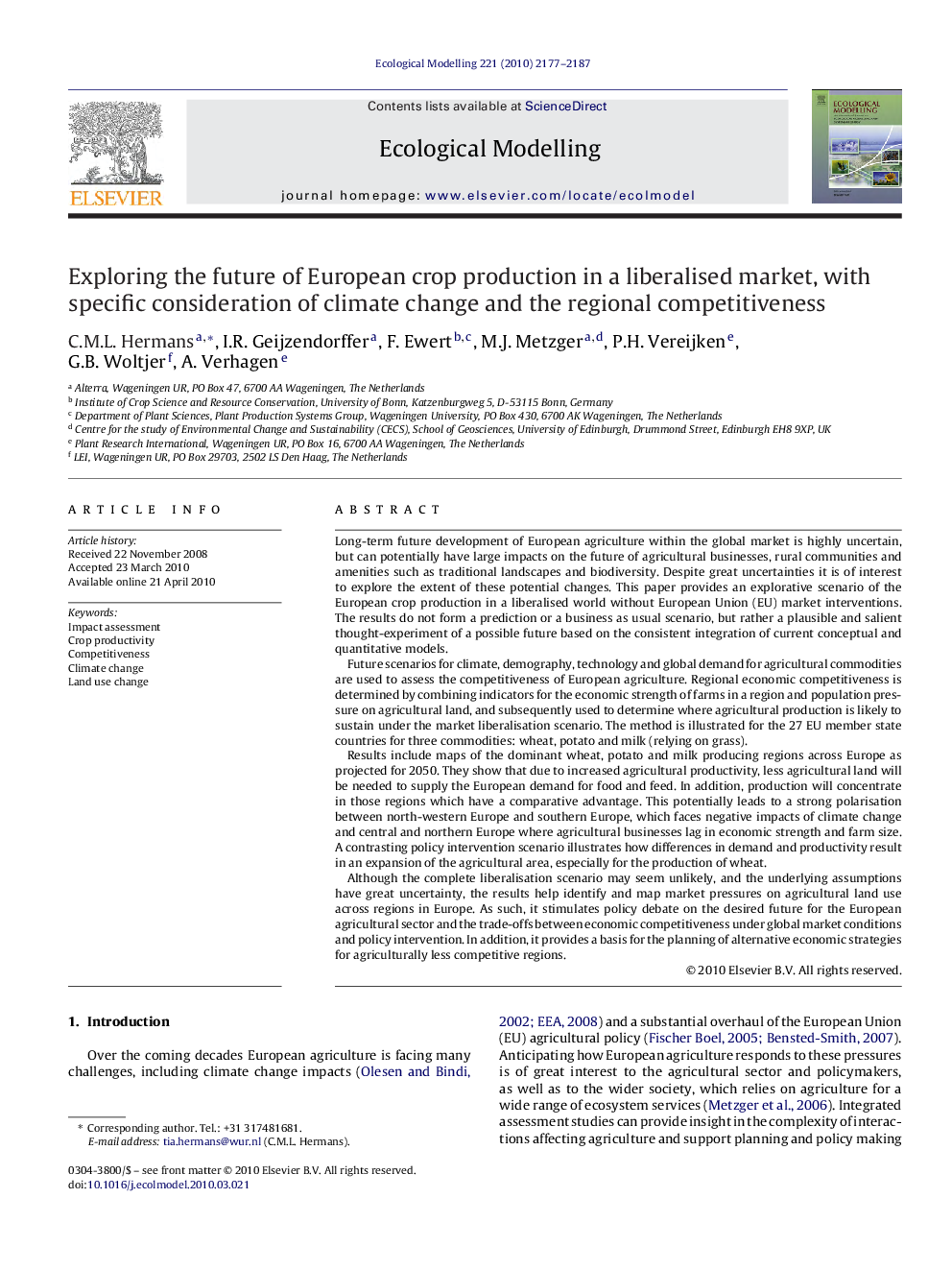| Article ID | Journal | Published Year | Pages | File Type |
|---|---|---|---|---|
| 4377134 | Ecological Modelling | 2010 | 11 Pages |
Long-term future development of European agriculture within the global market is highly uncertain, but can potentially have large impacts on the future of agricultural businesses, rural communities and amenities such as traditional landscapes and biodiversity. Despite great uncertainties it is of interest to explore the extent of these potential changes. This paper provides an explorative scenario of the European crop production in a liberalised world without European Union (EU) market interventions. The results do not form a prediction or a business as usual scenario, but rather a plausible and salient thought-experiment of a possible future based on the consistent integration of current conceptual and quantitative models.Future scenarios for climate, demography, technology and global demand for agricultural commodities are used to assess the competitiveness of European agriculture. Regional economic competitiveness is determined by combining indicators for the economic strength of farms in a region and population pressure on agricultural land, and subsequently used to determine where agricultural production is likely to sustain under the market liberalisation scenario. The method is illustrated for the 27 EU member state countries for three commodities: wheat, potato and milk (relying on grass).Results include maps of the dominant wheat, potato and milk producing regions across Europe as projected for 2050. They show that due to increased agricultural productivity, less agricultural land will be needed to supply the European demand for food and feed. In addition, production will concentrate in those regions which have a comparative advantage. This potentially leads to a strong polarisation between north-western Europe and southern Europe, which faces negative impacts of climate change and central and northern Europe where agricultural businesses lag in economic strength and farm size. A contrasting policy intervention scenario illustrates how differences in demand and productivity result in an expansion of the agricultural area, especially for the production of wheat.Although the complete liberalisation scenario may seem unlikely, and the underlying assumptions have great uncertainty, the results help identify and map market pressures on agricultural land use across regions in Europe. As such, it stimulates policy debate on the desired future for the European agricultural sector and the trade-offs between economic competitiveness under global market conditions and policy intervention. In addition, it provides a basis for the planning of alternative economic strategies for agriculturally less competitive regions.
